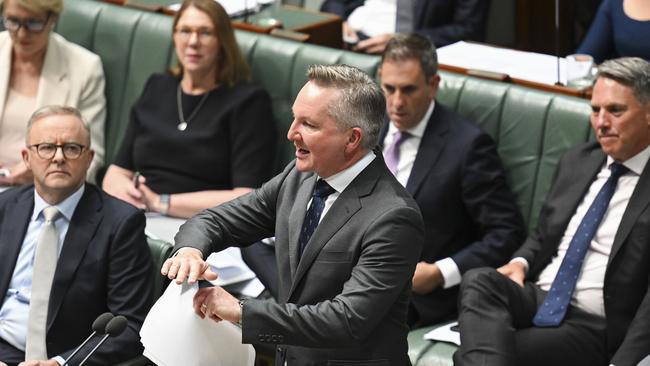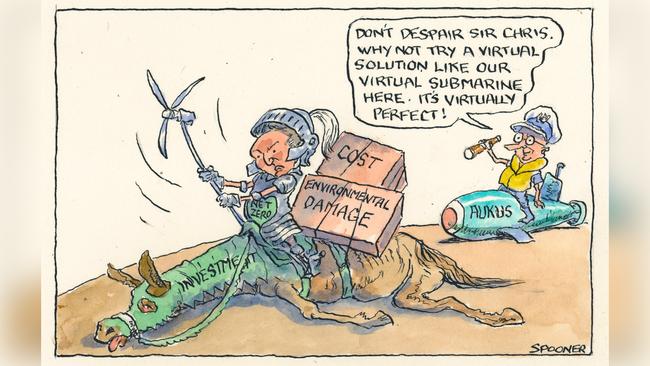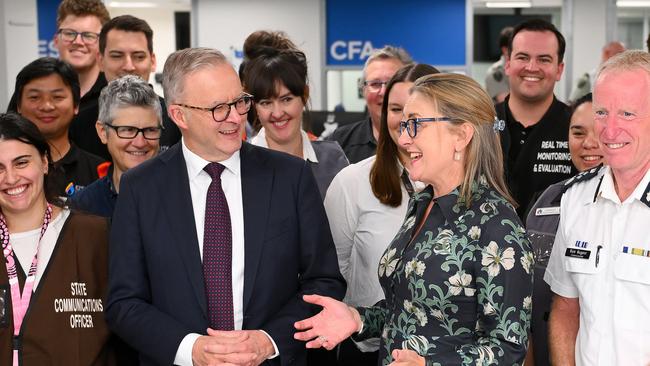
There is grave risk to the ALP government that at the next election Bowen will do the same thing again but this time via botched energy policies.
The world is engaged in a massive electrification revolution, and we must be part of it. But the secret of carbon dioxide reduction at this early stage of the revolution is not to commit too much of your carbon reduction exercises into one particular avenue.
Diversity is the key given the rate of technology change that is taking place. And it is important to look at the total costs of every step.
Similarly, it is absolutely vital that Australia does not sacrifice its key industrial base by adopting foolish policies.
Bowen is looking at a carbon penalty to be imposed on import competing industries and if that comes to fruition significant parts of a number of key industries including explosives and cement will be badly damaged by competition from countries that do not impose a similar carbon dioxide tax on the same products.

If the Albanese government feels it necessary to penalise our local industries, then it will need to put a tariff on imported products from countries that don’t have a similar tax.
In the process our cost of living will rise even further. If Bowen heads in these directions, then it is likely to be the equivalent of the botched franking credits tax.
In all avenues of carbon free or low carbon power generation there are remarkable new technologies emerging around the world, so it is foolish to simply say that a particular technology should have no application in Australia. Opposition leader Peter Dutton has picked up that Bill Gates is behind a new nuclear technology that uses sodium rather than water as a coolant.
Dutton would also be aware that China and other countries are using molten salt as a coolant while there is also a revolution taking place in smaller nuclear plants.
These and other nuclear developments will mean that nuclear is going to be an important part of global emissions reduction. Not surprisingly, already some 14 countries have recognised that the nuclear technologies now being installed and developed are totally different from the old plants, which were far more dangerous. And nuclear plants can be erected in place of old coal fuelled generators and therefore take advantage of existing grid installations. This slashes the costs.
Nuclear has to be part of our mix but similarly so will batteries where again, particularly in China, giant strides are being made in battery technology.
The mere mention of gas oil and coal as future low or nil carbon energy sources is scoffed at by the carbon purists. But again incredible technologies are being developed that will substantially lower or eliminate the net carbon dioxide emissions from these fuel sources.
Fascinatingly, under current technology Australia has probably the best low cost, low carbon gas deposit.in the world.
Victoria’s immense on shore gas, which adjoins the Gippsland gas treatment plant and pipeline, is dissolved in water and therefore does not require fracking.
The water can be separated and used to grow carbon dioxide absorbing plants to neutralise the carbon being produced by the Victorian gas fields. These unique Australian resources are being blocked by the Victorian government, but need to be part of the national mix. They may even be part of the iron and steel carbon reduction technologies.

A danger Australia faces is that a badly prepared report from the CSIRO claimed that wind and solar facilities were very low-cost power sources, but it did not take into account the cost of erecting transmission lines from the wind or solar installations to markets, and it also did not take into account the short life cycles of many wind and solar investments.
Many Australian renewable decisions have been made without looking at the total costs, including community opposition.
Wind and solar can and should be part of the mix in our diversified low or no carbon power sources, but they should not dominate the mix — particularly as in both the US and Europe they are finding that old renewable plants are not economic because the equipment has to be replaced. As in Australia, they also generate strong community opposition.
Bowen should be in the position where he has all bases covered, but he has been side tracked into issues that the tradies call a Ute tax and what global explosive leader, Orica, and the cement makers say will damage their operations in Australia. There are better ways to solve those problems. And too much of our effort has been concentrated on wind and solar.
Again, they are part of the mix, but diversity should be the key strategy to make sure that we can participate in the exciting developments over a wide area.





Back in 2018, Chris Bowen botched a proposed franking credits reduction plan and greatly contributed to Bill Shorten losing the election to Scott Morrison.